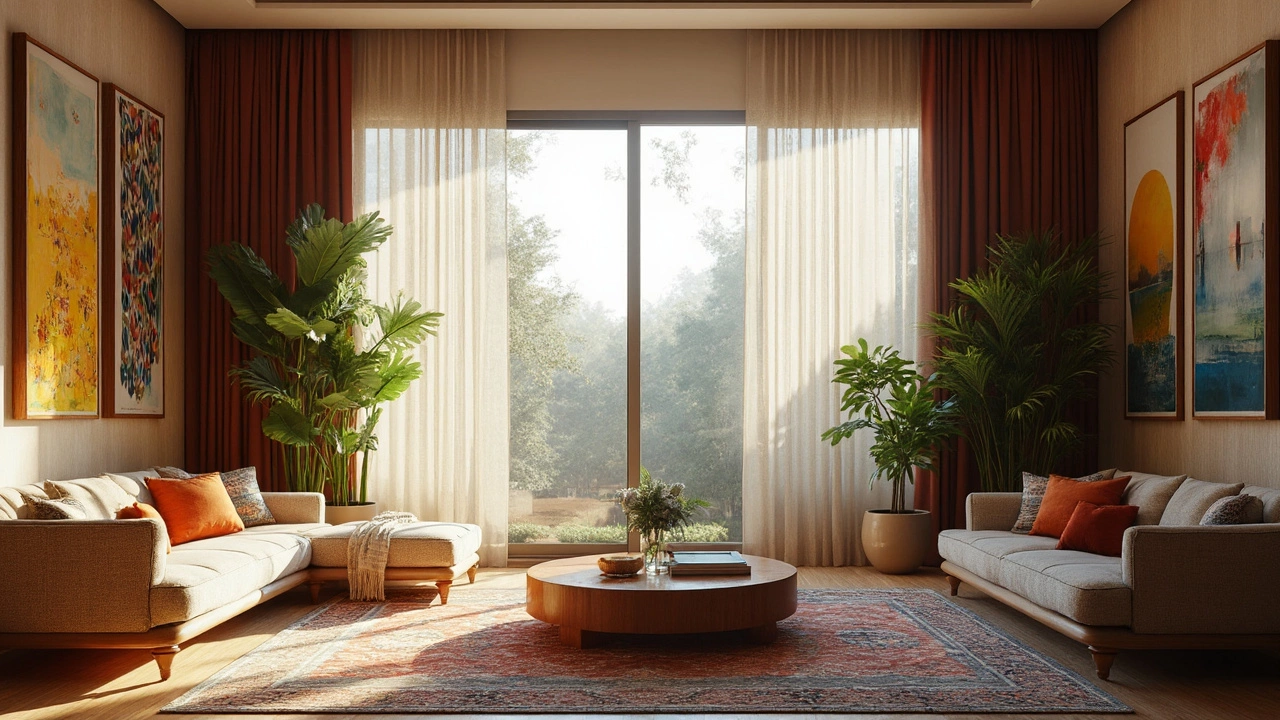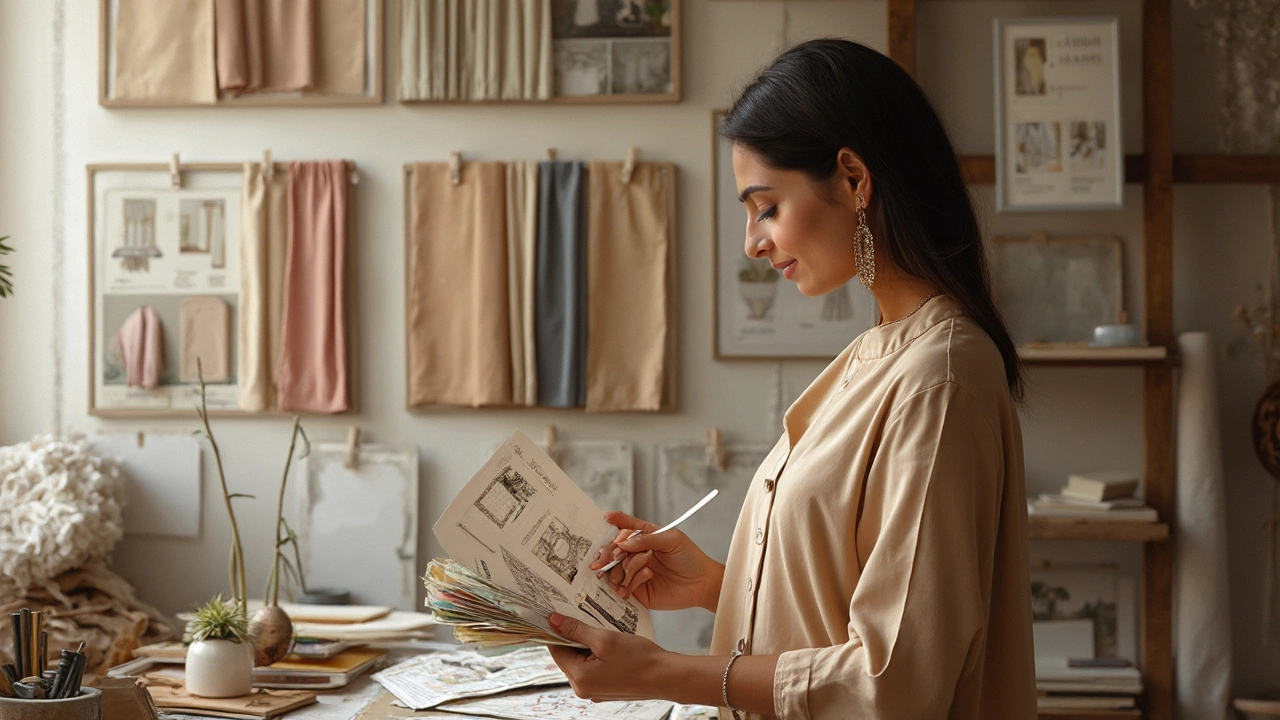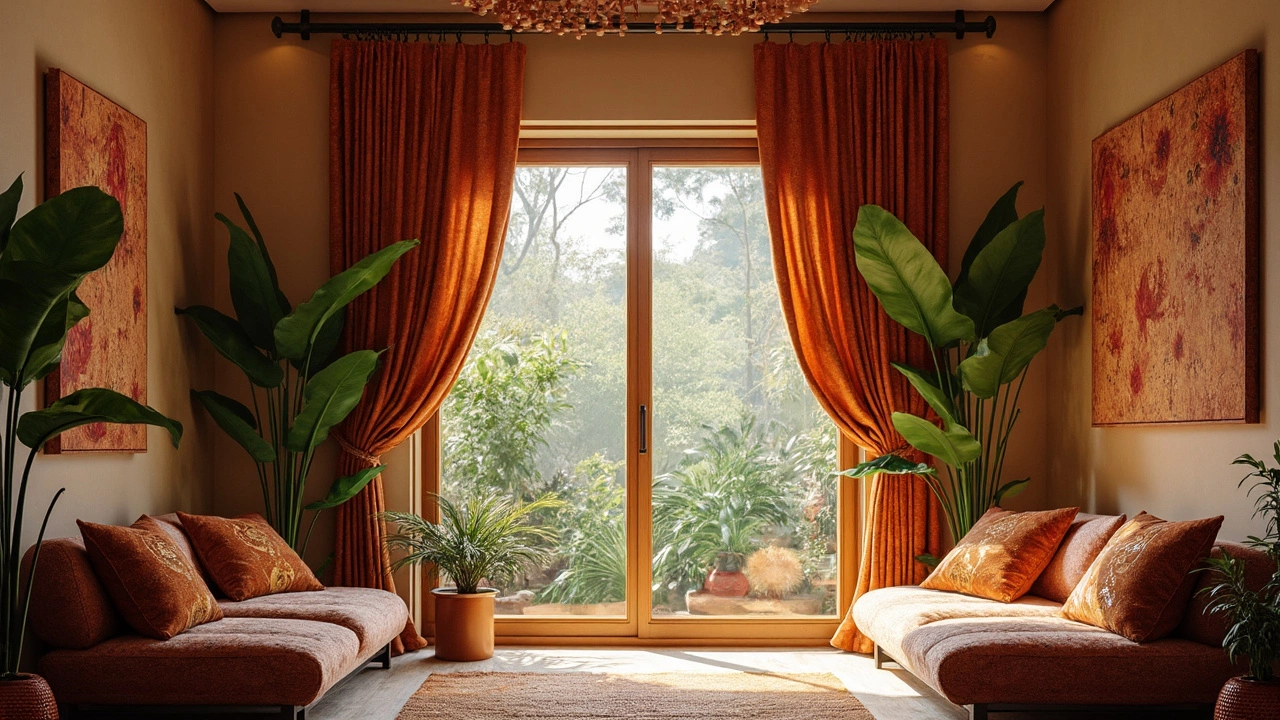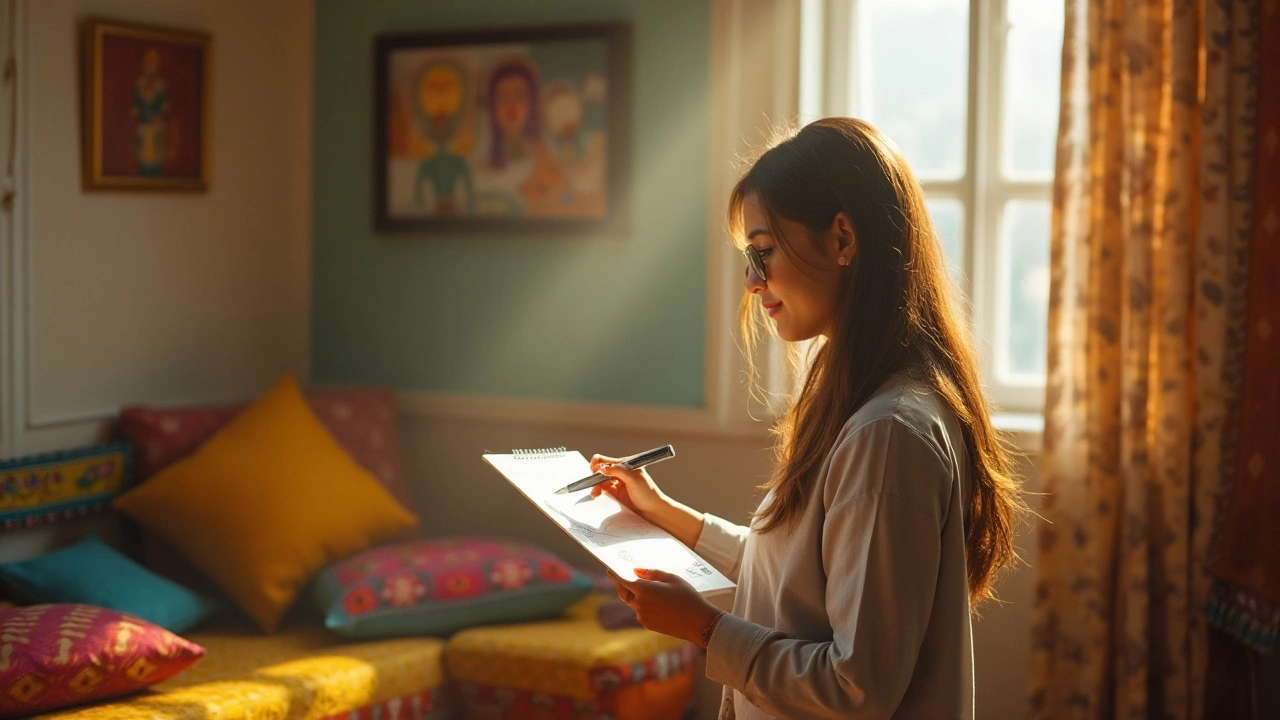Are Curtains Old Fashioned? Fresh Takes on a Timeless Staple

Are curtains just something your grandma loved, or can they still look great in a modern place? This is a real question a lot of people have—especially with Instagram full of homes showing bare windows, blinds, or those super-minimal shades. But before you ditch your drapes, there’s a lot more to the story.
Sure, you can find curtains that look like they came out of an old movie. But modern curtain styles and materials have come a long way. In fact, the right curtains can add coziness, control sunlight, and give you that bit of privacy you might not get from other options. Plus, believe it or not, designers are actually bringing curtains back with new patterns, bold colors, and even clever tech fabrics that block noise or keep rooms cooler.
If you’re rethinking your windows, don’t just write off curtains as old-fashioned. A few smart tweaks—like swapping heavy grandma fabrics for linen or cotton, or picking a clean, simple rod—can totally change the vibe. And if you’re worried about looking dated, there are easy ways to avoid that, too. It’s all about the details, not the idea of curtains themselves.
- Curtains Through the Ages: A Quick Look Back
- What's Making People Question Curtains
- Curtains vs. The Modern Competition
- Updating Curtains for a Modern Home
- Real-World Curtain Tips That Work
Curtains Through the Ages: A Quick Look Back
Believe it or not, curtains have been a staple in homes for thousands of years. The first signs of fabric draped over windows or doorways go way back to ancient Egypt and China. People used basic woven materials mostly for blocking light, keeping bugs out, and grabbing some privacy—stuff we still want today.
During the Middle Ages, curtains really started to show up in European castles and mansions. Rich families used heavy velvet or brocade not just to cover windows, but also as fancy room dividers and even to keep out chilly drafts. These early window treatments made rooms warmer and a bit more private, priorities that still matter in modern home decor.
Fast forward to the Victorian period, and now you get super elaborate swagged and tasseled drapes. These were status symbols just as much as they were practical. In fact, some 19th-century homes had as many as five separate layers of fabric at each window. But even outside the mansions, curtains remained a go-to because they were simple to make and easy to swap out seasonally.
After World War II, as homes got a bit smaller and design got way more minimal, curtain styles changed too. You started seeing lighter fabrics, basic rods, and prints that matched the kitchen wallpaper. By the 1980s, almost every American home had some kind of curtain or drape—often in pastel or bold geometric prints (think of your parents’ house in those old photos).
Here’s a quick snapshot to see how curtains have changed over time:
| Time Period | Main Curtain Style | Common Materials |
|---|---|---|
| Ancient Egypt/China | Simple draped cloth | Linen, silk, woven reeds |
| Middle Ages | Heavy hangings | Wool, velvet, brocade |
| Victorian Era | Layered & decorative | Velvet, lace, damask |
| Mid-20th Century | Simpler, printed | Cotton, blends, polyester |
So, curtains aren’t just an old idea—they’ve been re-invented to fit each era, just like phones or cars. Even today, new twists in modern curtains and interior design keep them going strong.
What's Making People Question Curtains
If you follow home decor trends, you’ve probably heard people say curtains are looking a bit old school. It’s not just about taste—there are some clear reasons people have started to think twice about traditional drapes.
For one thing, there’s a big push toward minimalism and super-clean lines in modern curtains trends. A lot of folks prefer open windows, simple blinds, or shades that basically disappear when not in use. With shows like "The Home Edit" or those viral #shelfie posts showing off bare windows, curtains can seem like too much fabric or visual noise.
Builders are even designing homes with bigger windows and sliding glass doors, making big, heavy window treatments a tough fit. Toss in the fact that shades and blinds now have cool features like motorized controls and voice activation (yes, you can now yell at your blinds to close), and it’s easy to see why curtains might feel behind the times to some people.
Home decor is also riding the eco-friendly wave. Lots of folks want solutions that let in more daylight to use less energy for lighting, and they worry about all the dust curtains can collect. Let’s be honest—no one enjoys hauling drapes down, washing them, and trying to hang them back up straight.
Some people feel like curtains are "high maintenance" compared to blinds or shades. And if you’ve ever battled with tangled cords or a curtain rod that keeps falling, you get it. Still, all these reasons depend a lot on personal style, where you live, and what you really want your space to feel like.
| Window Covering | Care Level | Light Control |
|---|---|---|
| Curtains | Medium/High | Very adjustable |
| Roller Shades | Low | On/Off |
| Blinds | Low | Good, but less cozy |
So, it’s not that curtains are always out of style—it’s just that newer options and different lifestyles are making people rethink what works best for their homes.

Curtains vs. The Modern Competition
When you think curtains are getting pushed aside, it’s mostly because of all the other window treatments popping up: roller shades, blinds, shutters, and even fancy smart glass that tints itself. Each of these has its fans, mostly because of the “clean” look and how simple they seem to use. But do they really replace classic curtains in every way?
Let’s break this down:
- Blinds and shades are super popular for people who like things neat and no-fuss. But they don’t always offer the same cozy vibe. Also, it’s pretty rare to find blinds that help with room acoustics, block light as well, or keep things as private as thick curtains can.
- Shutters look cool and sturdy, but they can be pricey and tough to clean. Plus, they’re basically a big commitment. You want to make changes later, you’re stuck with holes in your window frames.
- Smart glass seems like something out of a sci-fi movie. Cool, sure, but the cost is next level. Also, if something breaks? Good luck fixing it yourself.
You don’t have to take my word for it. Here’s what design expert Emily Henderson said about window treatments:
“Curtains give a room softness and a finished feel you just can’t get from shades or blinds. Even modern homes need that bit of fabric to keep things warm and inviting.”
If you like numbers, check this out. The Global Window Covering Market Report from 2024 showed this breakdown of popularity:
| Type | Global Market Share (%) |
|---|---|
| Curtains/Drapes | 35% |
| Blinds/Shades | 50% |
| Shutters | 10% |
| Smart Glass | 5% |
This means curtains are still holding strong, even with all the new tech and styles. The real trick? Mix things up. Lots of homes use both curtains and shades together for layered style and practical perks. So don’t feel like you have to pick just one.
Updating Curtains for a Modern Home
The secret to nailing a modern look with curtains is ditching anything fussy or dated. Heavily patterned fabrics, frilly valances, and old-school hardware just make your place look tired. Instead, think clean lines and light materials. For example, linen and cotton curtains give off an easy, relaxed vibe while still letting your room breathe. These materials are super popular with top interior design pros because they filter sunlight nicely without making your windows look closed off.
Color is huge too. If you want to play it safe, go for white, beige, or gray—they basically work anywhere. But if you want to make a statement, don’t be afraid to try a deep navy, forest green, or mustard yellow. Just keep the rest of the room a bit more neutral so the curtains pop, not clash.
Hardware makes a difference. Swap old, thick rods for slim, matte-black or brushed metal ones. It’s an instant update for almost no effort. And if you’re feeling a bit lazy, you can even get no-drill curtain rods that use tension (especially handy for renters).
Prints have made a comeback, but in smaller doses. Geometric patterns, color blocks, or even subtle stripes can add interest without screaming for attention. Still, stay away from super busy florals if you’re aiming for that crisp, current look.
- Hang curtains high—mount the rod closer to the ceiling, not just above the frame. This makes the room feel taller.
- Choose modern curtains that just kiss the floor, not pool around. Long, messy hems are out.
- Layer with blinds or shades for added privacy and light control. It looks intentional and put-together.
If you’re into tech, some manufacturers now offer curtains with built-in thermal linings. These can cut energy bills; according to the U.S. Department of Energy, tightly installed drapes can reduce heat loss by up to 10% during winter. Motorized smart curtain systems are becoming common too, so you can open or close them with your phone or a voice assistant. These features turn old-school window treatments into smart home must-haves.
Bottom line: modernizing your home decor with curtains isn’t about getting rid of them—it’s just about upgrading the details. Even a small swap, like changing to a sleeker rod or lighter fabric, can make your place feel brand new.

Real-World Curtain Tips That Work
Picking the right curtains doesn’t have to be complicated, but there are a few tricks that make a huge difference. You want your space to feel current, not outdated or overdone. Here’s what actually works in regular homes today:
- Hang them higher and wider. Put your curtain rod about 4-6 inches above the window frame (or even closer to the ceiling) and extend the rod 6-12 inches past each side. This makes the window—and the room—feel bigger.
- Go for simple, clean fabrics. Heavy velvets and busy patterns do feel dated. Stick to cotton, linen, or easy-to-clean synthetics in solid colors or crisp stripes. Neutral shades like white, gray, tan, or even muted blues work almost anywhere.
- Measure twice, buy once. Floor-length is the go-to for a polished look. Curtains should just skim the floor or break a half-inch for the relaxed touch. If they’re too short, the window feels chopped off.
- Think about the function. Need to block light in a bedroom? Grab blackout curtains. Want to keep it bright in the living room? Try sheers or lightweight, unlined panels. For temperature control, look for insulated or thermal options—they really do help keep rooms cooler or warmer.
- Mix them up. You don’t have to use just one style. Layering sheers with heavier drapes gives you privacy and flexibility. You can also pair curtains with blinds or shades if you want maximum control over light and privacy.
| Fabric Type | Best For | Common Room |
|---|---|---|
| Cotton/Linen | Light and airy feel | Living rooms, kitchens |
| Blackout | Blocking outside light, privacy | Bedrooms, nurseries |
| Thermal | Energy efficiency, noise reduction | Bedrooms, home office |
| Sheer | Soft light, decorative | Dining rooms, bathrooms |
If you really want a shortcut, lots of big stores offer no-drill options with tension rods or stick-on curtain hooks. Super handy if you rent or just hate installing hardware. And don’t forget to clean them—curtains collect dust like crazy, so a wash every few months keeps your home decor fresh.

